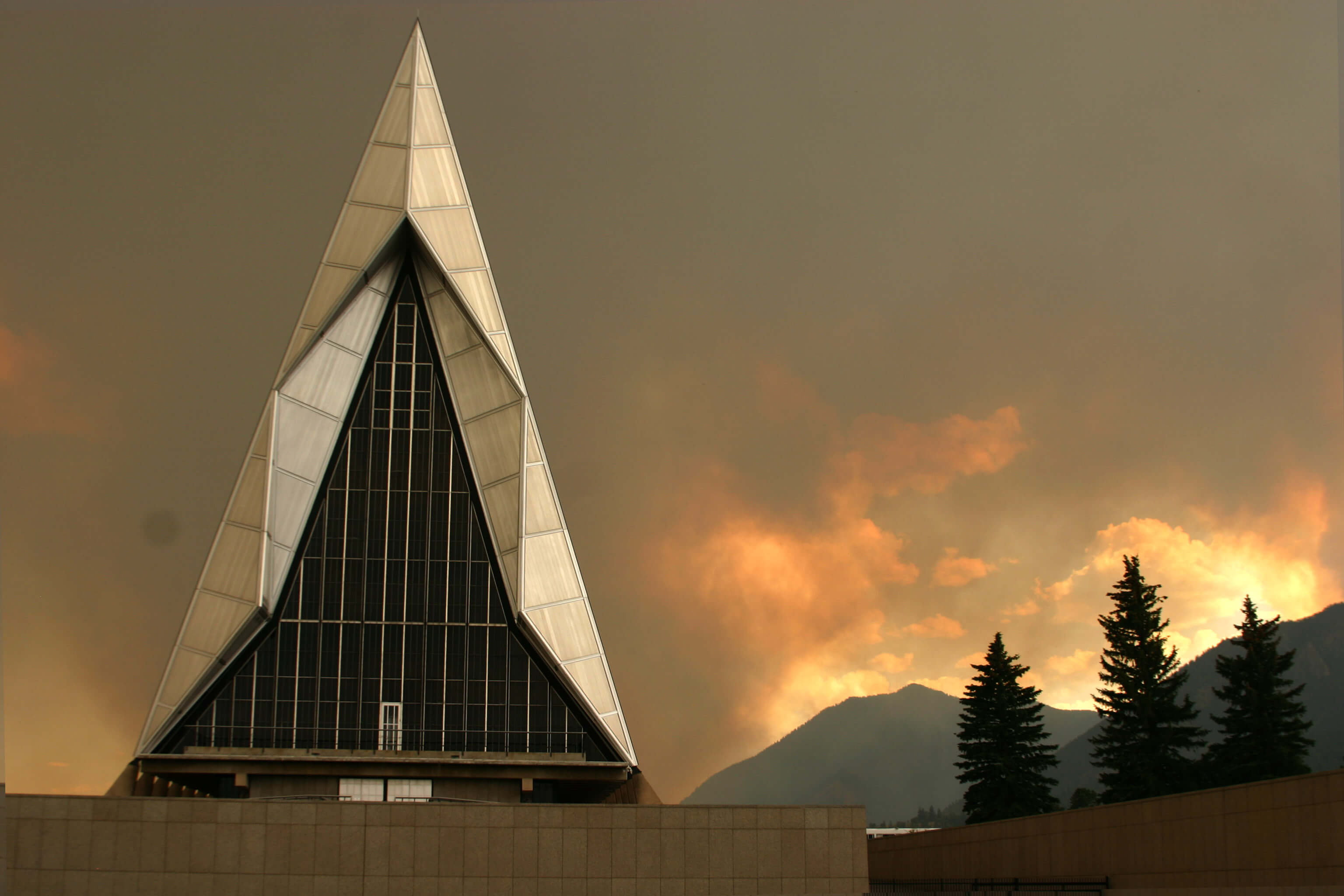5 years on: Waldo Canyon fire anniversary ignites memories
 By Laurie Wilson, June 26, 2017
By Laurie Wilson, June 26, 2017
The Waldo Canyon fire that barreled into Colorado Springs and threatened the U.S. Air Force Academy June 26, 2012, is burned in the memory of anyone who saw, fought or was affected by it.
The fire, the result of a perfect storm of extended drought, sweltering heat and extremely high winds, burned 18,000 acres, killed two people, leveled 347 civilian homes, and threatened to destroy Pine Valley housing, including the horse stables and historic Otis House among other structures.
Making sure that didn’t happen was the sole intention of Ken Helgerson, 10th Civil Engineer Squadron fire chief, who led the Academy’s firefighting efforts.
“It became a monster of a fire because it spread through the tree tops, lighting up trees like matches, which made fighting it on the ground even tougher,” he said.
The fire began June 23 in Waldo Canyon, a popular hiking area adjacent to the Academy. For three days it grew, changing directions and outsmarting firefighters trying to get ahead of it.
“Trying to predict which direction the winds might blow the embers to ignite another hot spot was anyone’s guess,” said Helgerson, adding that as the fire escalated, the need for crisis response teams and firefighters from several agencies to work together became obvious.
Response teams from the surrounding military bases were already on board to assist the Academy. But because the Academy leases its land from El Paso County, legal hurdles had to be jumped over to allow outside agencies to assist the firefighting efforts.
Once cleared, additional teams came on board from Colorado Springs Utilities, El Paso County and Redding, California, hot shots. In total, 110 responders from other agencies assisted the installation.
On the infamous Tuesday afternoon that stunned the city, the blaze turned north, then west, sending a fire vortex of flames into nearby Mountain Shadows neighborhood, causing a panicked mass evacuation of the city’s entire northwest area, including families living in Pine Valley.
Among the heroism that day were the fast actions of Helgerson’s hot shot team, putting out eight to 10 spot fires per hour, saving approximately 40 civilian homes in Peregrin, which sits immediately along the Academy’s southern border.
By Wednesday, the threat to Pine Valley itself was all too real. Without the quick efforts of all the teams working together to save the base, Pine Valley would have been lost.
Academy firefighter Reid Lohse vividly remembers sitting near the southwest border waiting for the fire to strike.
“We were all broken up into small two to four man groups doing some mitigating and stuff, and by that time, we’d pretty much written off Pine Valley,” he said.
By 3 p.m. that day, a safety net was being plowed using eight bulldozers, creating a 300 foot wide path from the aqueduct down to Ice Lake, thanks to the help of the 52nd Engineer Battalion from Fort Carson. Helgerson said he’s forever grateful to battalion commander Lt. Col. Danielle Ngo and her team for their assistance.
“We were busy doing all we could and she and her team came in and just went to work,” he said. “I just was amazed at how much we accomplished and how quickly. “Fort Carson was priceless in helping defend the Air Force Academy.”
The path was instrumental in assuring the fire would not penetrate Pine Valley.
The Waldo Canyon fire brought President Barack Obama to the city to declare it a federal disaster area. Today, it’s well known that many lessons were learned from the fire, and a new firefighting model has been put in place to aid with fires and recoveries nationwide. Helgerson said lesson learning occurred for the Academy’s fire department as well.
“I would say the biggest lesson learned from our perspective was establishing interagency cooperation guidelines, equipment selection and response posture,” he said. “And we used those lessons effectively when responding to the Black Forest fire a year later.”
To date, the Waldo Canyon and Black Forest fires remain the two worst in Colorado history.
Though it’s been five years since Waldo, 45 firefighters still call the Academy home. And just like anyone else here then, each hold unique and commonly shared memories of the epic firefight.
Helgerson and Lohse share the humble attitude common among firefighters hailed as heroes who will say they were simply doing their job. If pushed, they would admit that together with all the rest of the firefighters who battled the blaze, they helped save the Academy from going up in flames.